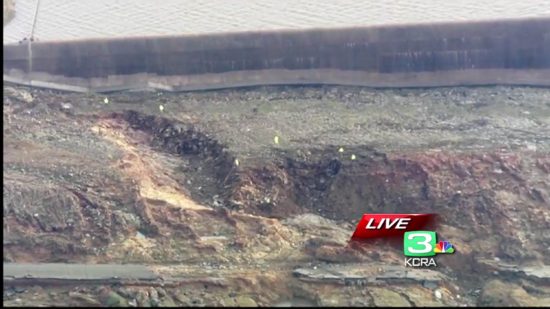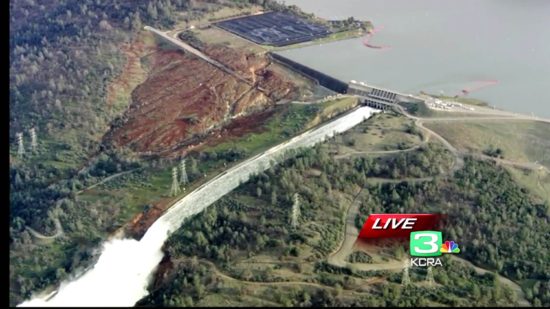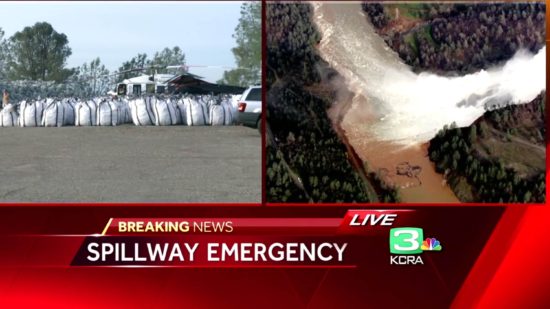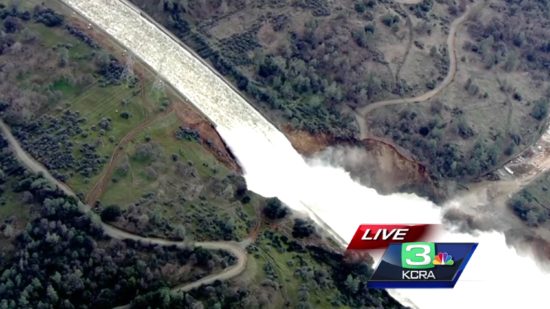With daylight and Oroville Lake water levels now 4 feet below the lip of the emergency spillway, we can see that the area of concern is a gouge which developed near the far end of the concrete weir, and was eroding uphill toward that structure; for scale, those yellow spots are people inspecting the gouge (click images for full-size):
A wide-angle view (KCRA-TV helicopter frame grabs) shows the main, heavily damaged spillway which still has a huge 100,000 CFS flow continuing in an attempt to reduce the lake level as much as possible:
Rocks have been bagged overnight and helicopters will soon start filling the gouge:
The 100,000 CFS flow through the main spillway continues to erode the break in the concrete flume, but engineers are not worried about the damage eroding uphill and damaging the main portion of the dam:

 Home/Blog
Home/Blog







